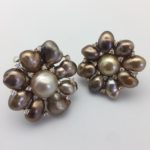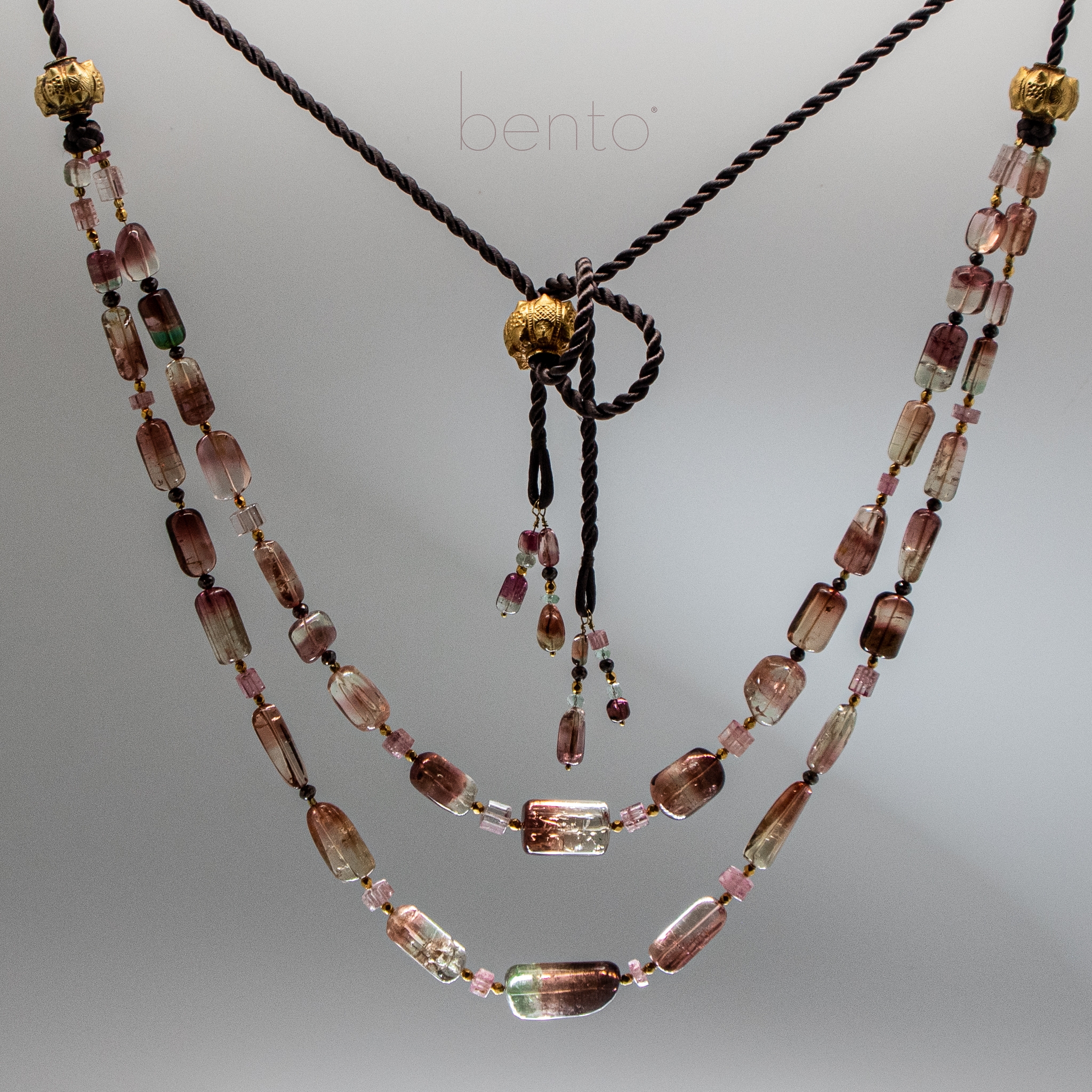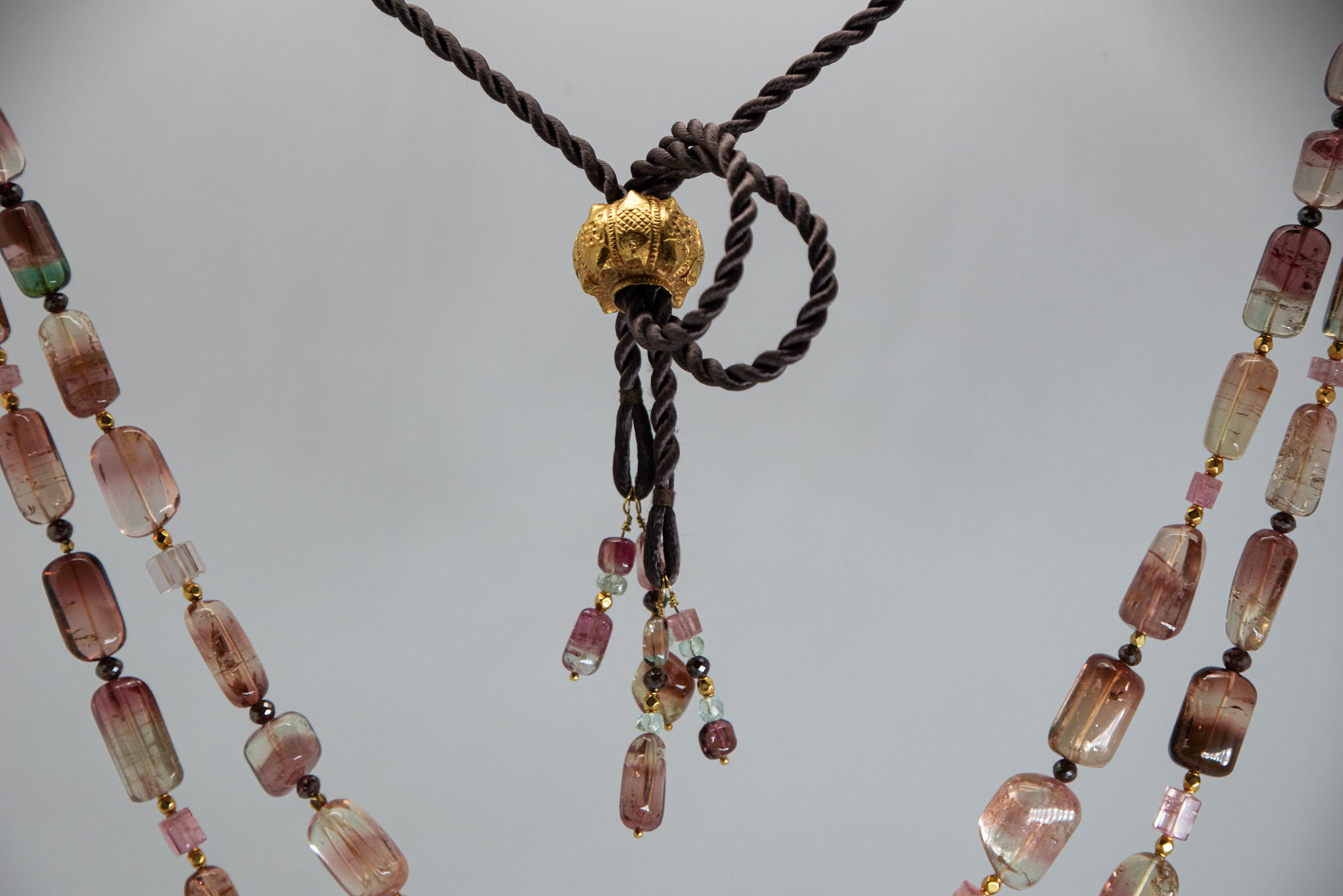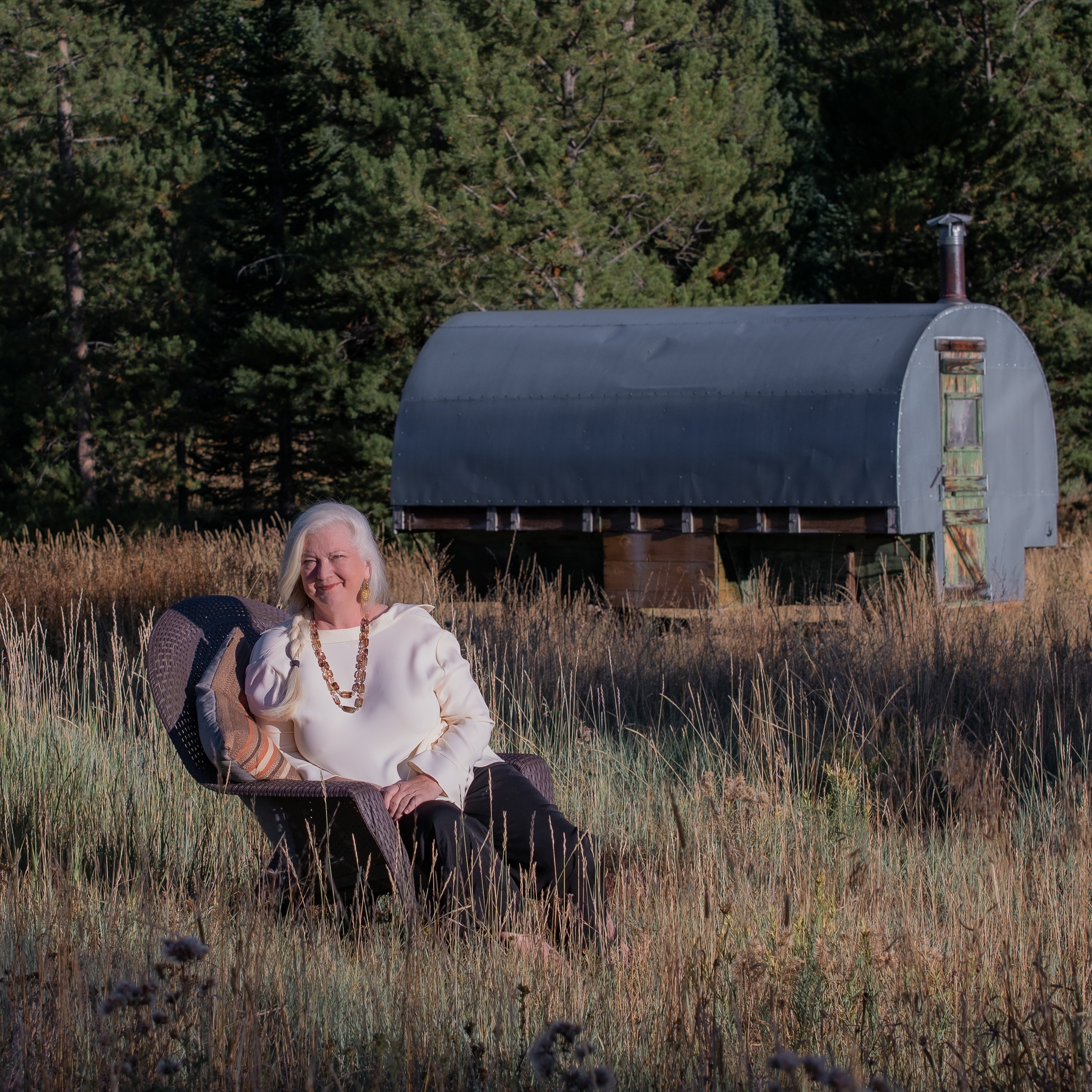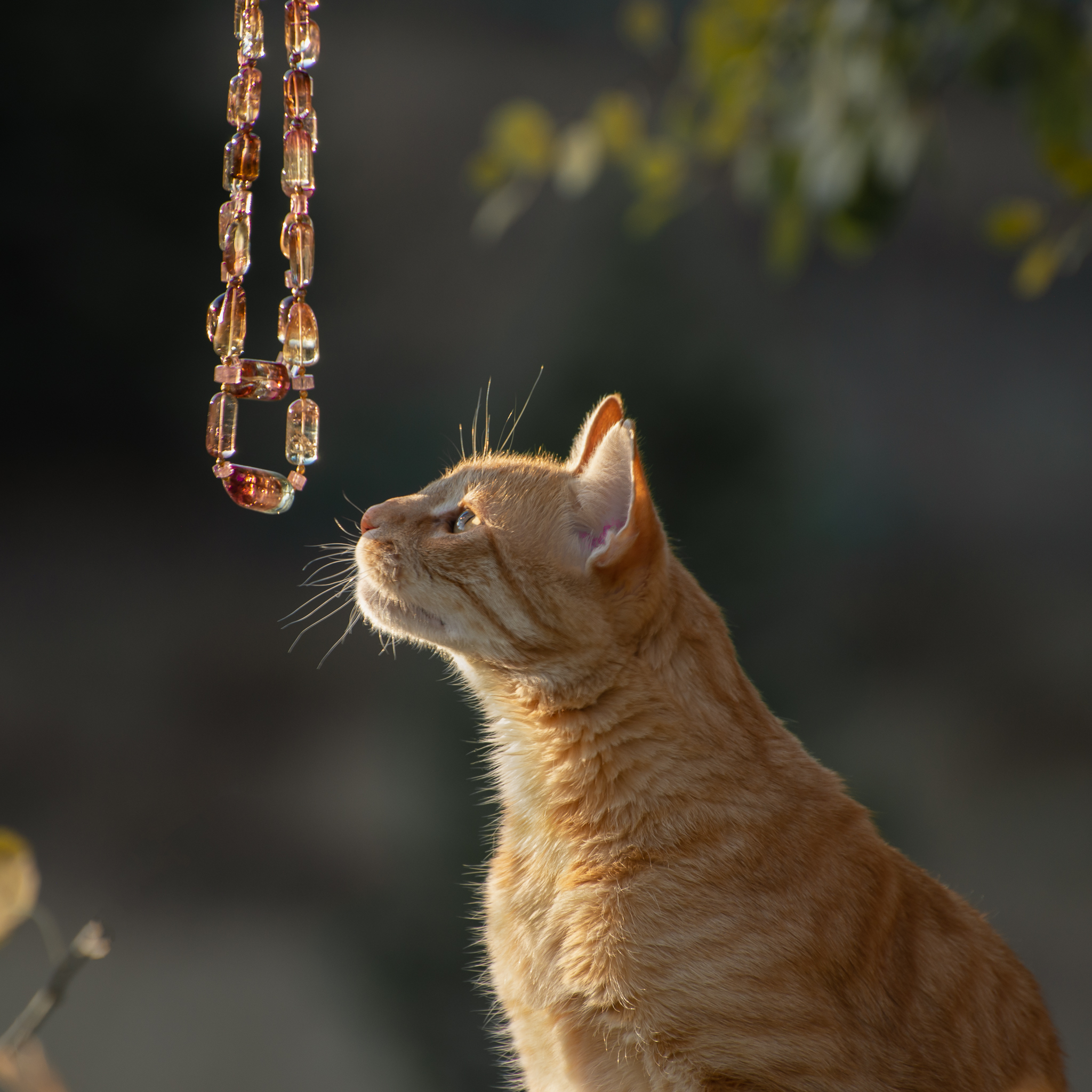Tourmaline nugget necklace with brown diamond and gold beads in the style of India
You don't have to be an October baby to rock this incredible statement necklace of fancy tourmalines, brown diamonds and gold! Two strands (approximately 850 carats!) of stunning polished tourmaline nuggets in pinks, greens and browns are accented with faceted brown diamond beads, antique gold beads and adjustable silk cords in the style of India. When Dutch traders returned with gems from Sri Lanka in the early 1700’s, they called any unfamiliar stones by the Sinhalese name “turamali” meaning “stones with mixed colors.” Thus, any stone not recognized as a ruby or sapphire simply became a “turmali”.
designer: atelier bento
details:
- stones: bi-color tourmaline crystal nuggets
- necklace: Two strands, 22 inches, adjustable
- weight: approximately 850 carats
- gold: 18K yellow gold
- accent beads: faceted brown diamonds
- antique gold bead source: India
- designer: bento
$16,400
item: N 00041
availability: one-of-a-kind
CONTACT: 520-906-7187
about Tourmalines:
When Dutch traders returned with gems from Sri Lanka in the early 1700’s, they called any unfamiliar stones by the Sinhalese name “turamali” meaning “stones with mixed colors.” Thus, any stone not recognized as a ruby or sapphire simply became a “turmali”. source: AGTA.org
Tourmalines exhibit the most diverse color range of any gemstone. From the red of Rubellite, the indigo blue of Indicolite, the turquoise of the Paraíba tourmaline from Brazil, and the ever fascinating Watermelon Tourmaline that is cut crosswise to reveal a pink center with a green edge, there is a tourmaline for every imagination.
Tourmalines make up a group of closely related mineral species that share the same crystal structure but have different chemical and physical properties. They share the elements silicon, aluminum, and boron, but contain a complex mixture of other elements such as sodium, lithium, calcium, magnesium, manganese, iron, chromium, vanadium, fluorine, and sometimes copper. A tourmaline’s chemical composition directly influences its physical properties and is responsible for its color. Gemologists use a tourmaline’s properties and chemical composition to define its species. The major tourmaline species are elbaite, liddicoatite, dravite, uvite, and schorl. Most gem tourmalines form in igneous granite pegmatite pockets and some form in limestone that has been altered by heat and pressure.
Tourmalines are mined in a variety of places, most notably Brazil, however there are also some great sources in California and Maine, as well as in Madagascar and Afghanistan. The birthstone of October, an October girl could probably collect a different color of tourmaline for each birthday!
partial source: GIA.edu
YOU MAY ALSO LOVE:
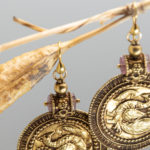
Mayura Gold Earrings
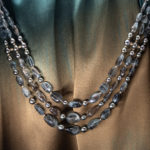
Blue Lagoon
CONTACT: 520-906-7187
